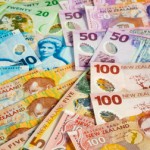 Gold fell for a tenth straight session on Wednesday, headed for the longest losing stretch since 1996, as investors weighted the chance of a US interest rate hike in as early as September, with bearish headwinds broadly expected to continue.
Gold fell for a tenth straight session on Wednesday, headed for the longest losing stretch since 1996, as investors weighted the chance of a US interest rate hike in as early as September, with bearish headwinds broadly expected to continue.
Gold futures for delivery in August traded 0.74% lower at $1 095.3 per troy ounce at 06:34 GMT, shifting in a daily range of $1 102.3 – $1 089.7, close to Mondays five-year low of $1 080.0. The contract fell 0.30% on Tuesday to $1 103.5, a ninth straight daily drop.
Negative sentiment towards the metal has built up as the Federal Reserve prepares to raise borrowing costs in the US for the first time since 2006, while a key safe-haven support was lost last week after Greece agreed to creditors’ terms for reforms in exchange for a third bailout.
Fed Chairwoman Janet Yellen reiterated in her testimony before US Congress last week that the central bank remains on track to raise rates this year for the first time in nearly a decade. Her comments were in line with the FOMC’s most recent policy statement and a speech she held on July 10th when she underscored a continued weakness in the US labor market but also expressed confidence that the US economy will continue to grow steadily in 2015, helping improve labor conditions.
Reflecting the hike expectations, and also drawing support from better-than-expected economic data last week, the US dollar hovered near the highest in three months against a basket of major trading peers, weighing down on dollar-denominated commodities such as gold. The September US dollar index contract was 0.16% lower at 97.270 at 06:34 GMT, shifting in a daily range of 97.530 – 97.215. It slid 0.75% on Tuesday to 97.426, having hit 98.310 on Monday, the highest since April 23rd.
“The long-term downtrend is still in place and more people are selling,” said for CNBC Mark To, head of research at Hong Kongs Wing Fung Financial Group. “We cant see any bullish factor. Inflation is well contained and we dont see a systemic crisis that might push people to buy gold.”
Investors tend to turn bearish on gold at times of economic growth and rising interest rates as the precious metal yields returns only through price gains, while other instruments that pay interest, such as bonds, tend to become more attractive.
The metal was also negatively impacted after China updated its bullion reserves on Friday for the first time since 2009, saying that it has bought 604 tons of gold since 2009, second only to Russia, but the 57% increase to 1 658 tons was much smaller than analysts had expected.
According to data compiled by Bloomberg, holdings in exchange-traded products backed by bullion fell 0.3% to 1 563.81 tons on Tuesday, the lowest since March 2009.
Assets in the SPDR Gold Trust, the biggest bullion-backed ETF, tumbled 4.77 tons yesterday to 689.69 tons, the lowest since September 2008. Holdings in the fund have shrunk by 49% since peaking in December 2012 at 1353.35 tons.
Pivot points
According to Binary Tribune’s daily analysis, August gold’s central pivot point on the Comex stands at $1 102.7. If the contract breaks its first resistance level at $1 109.6, next barrier will be at $1 115.6. In case the second key resistance is broken, the precious metal may attempt to advance to $1 122.5.
If the contract manages to breach the S1 level at $1 096.7, it will next see support at $1 089.8. With this second key support broken, movement to the downside may extend to $1 083.8.
In weekly terms, the central pivot point is at $1 140.3. The three key resistance levels are as follows: R1 – $1 150.5, R2 – $1 169.1, R3 – $1 179.3. The three key support levels are: S1 – $1 121.7, S2 – $1 111.5, S3 – $1 092.9.





